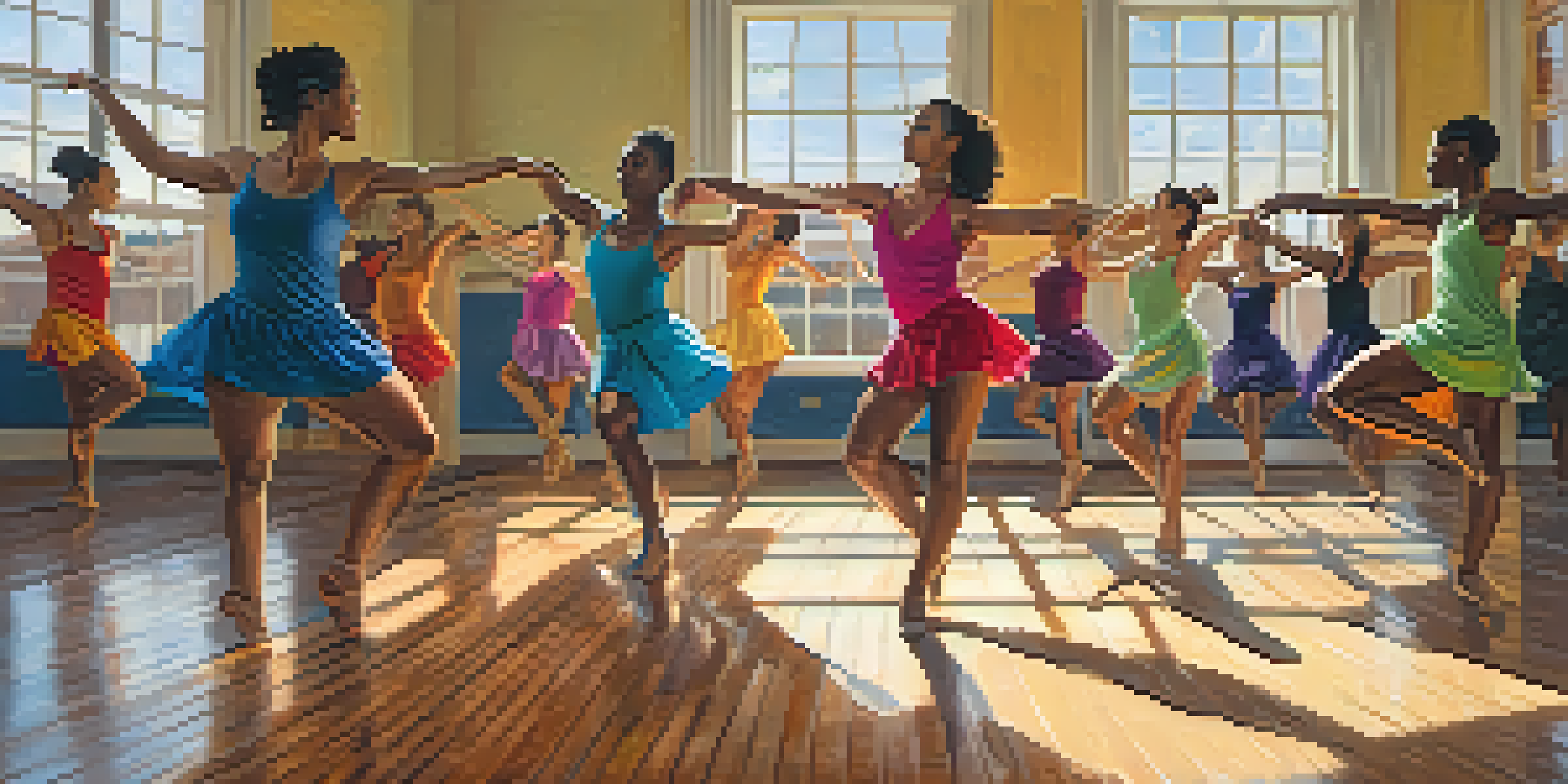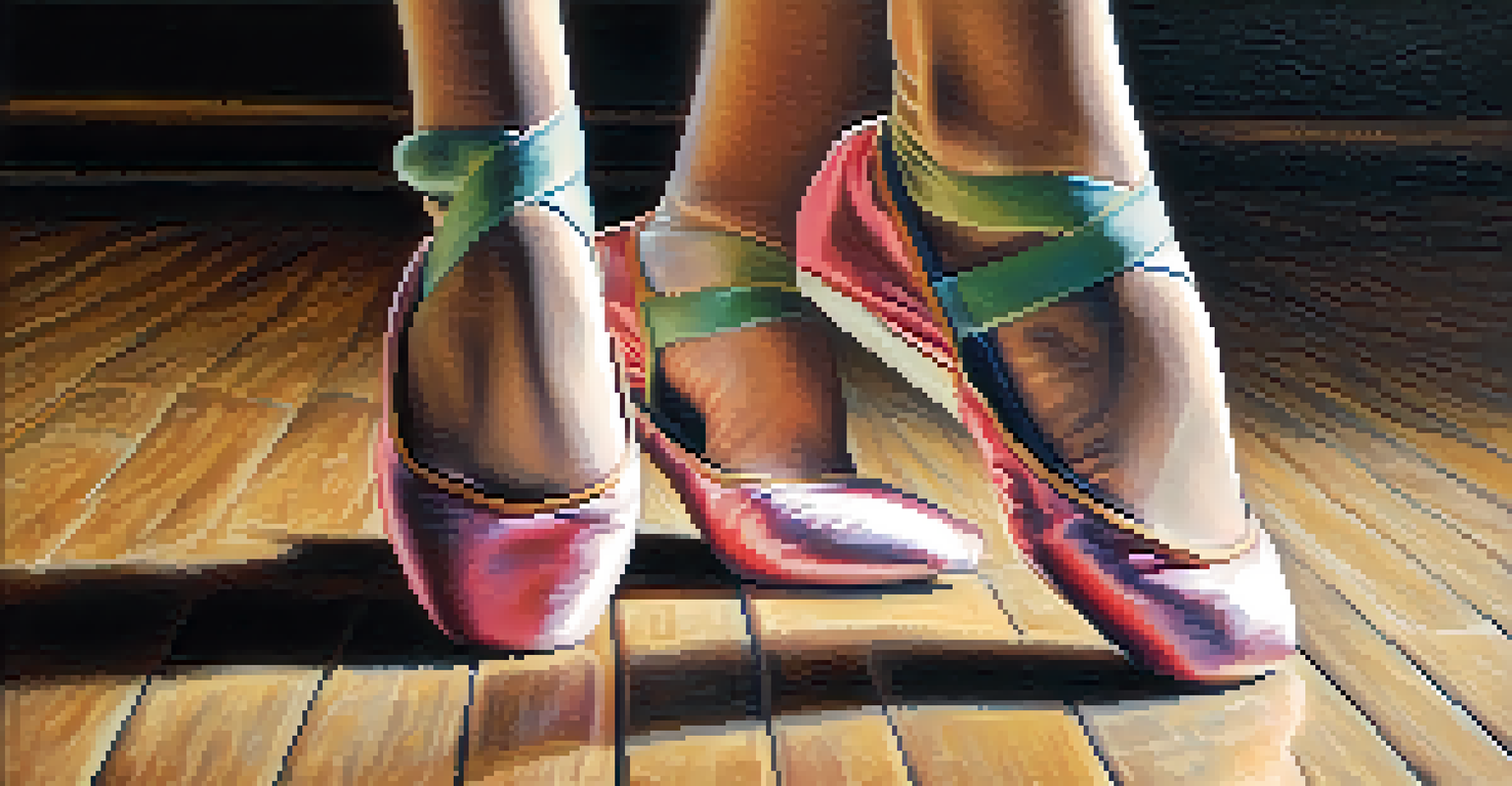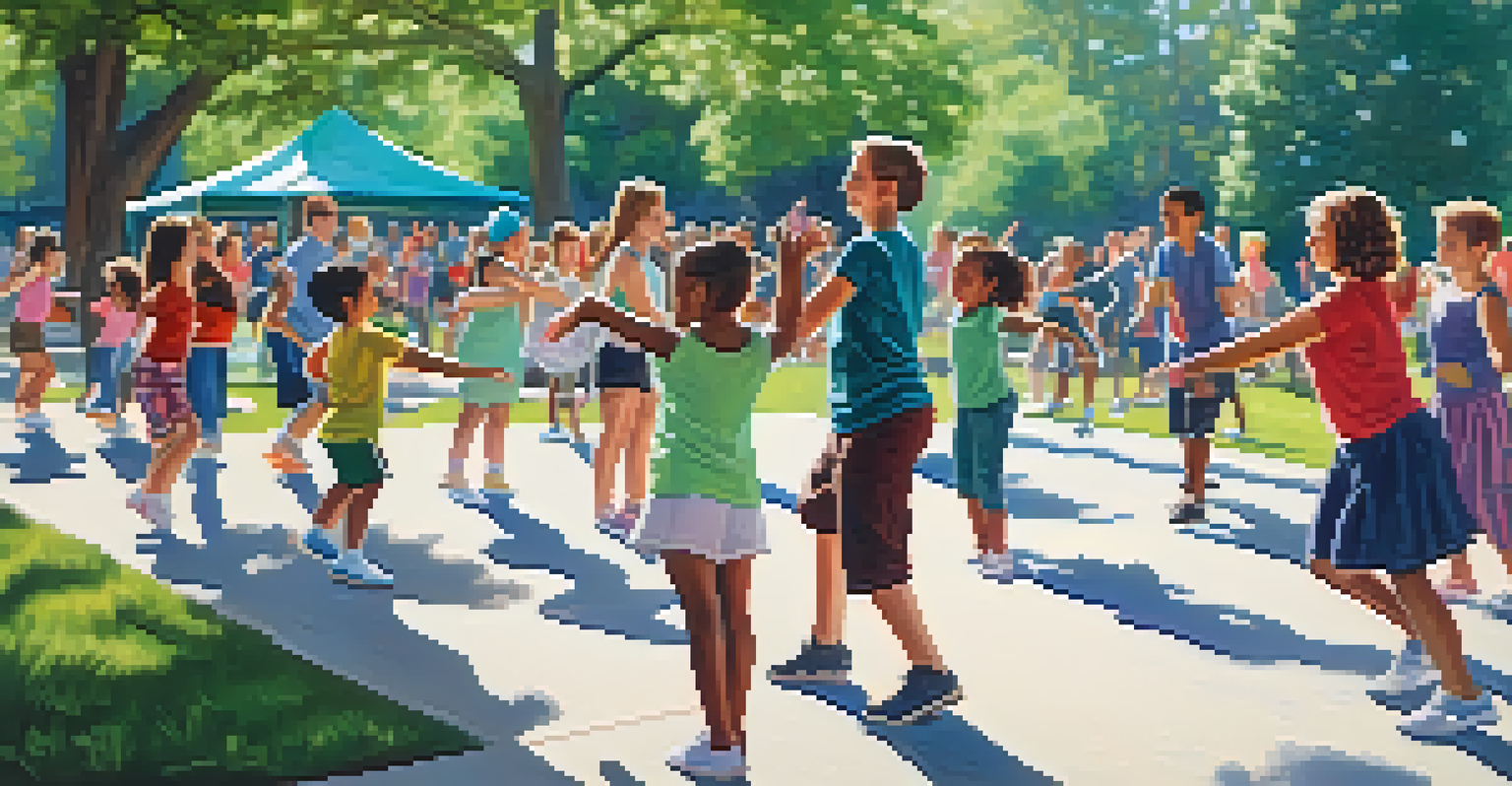The Role of Dance in Promoting Body Positivity and Confidence

Dance as a Universal Language of Expression
Dance transcends words, allowing individuals to express emotions and thoughts through movement. This form of expression can break down barriers, making it easier for people to connect with their bodies and feelings. When people dance, they often find a sense of freedom that encourages them to embrace their unique selves.
Dance is the hidden language of the soul.
By exploring various dance styles, individuals can discover what resonates with them personally. Whether it's the grace of ballet or the rhythm of hip-hop, each style offers a different way to communicate and celebrate one's body. This exploration fosters an appreciation for diverse body types and forms, promoting body positivity.
Ultimately, dance encourages individuals to let go of self-judgment and embrace their physicality. When you move, you become more aware of your body and its capabilities, which can help shift the focus from appearance to ability.
Building Community Through Dance
One of the most beautiful aspects of dance is its ability to build community. Dance classes, workshops, and social events bring people together, creating a supportive environment where everyone can thrive. This sense of belonging can significantly enhance self-esteem and body image.

In a dance community, individuals often share their experiences, which helps normalize the diverse ways bodies move and look. Sharing stories and celebrating each other's journeys fosters a culture of acceptance and love. This camaraderie can challenge societal standards of beauty and promote inclusivity.
Dance Promotes Body Positivity
Dance encourages individuals to embrace diverse body types and celebrate their unique physical capabilities.
When individuals witness their peers embracing their bodies, it inspires them to do the same. The collective energy of a dance community can uplift spirits and create a powerful sense of empowerment that resonates beyond the dance floor.
Dance as a Form of Self-Care
Engaging in dance is an enjoyable way to practice self-care. It allows individuals to escape from daily stressors, focusing solely on the joy of movement. This shift in perspective helps cultivate an appreciation for one’s body as a source of joy and strength.
To watch us dance is to hear our hearts speak.
Moreover, the physical activity involved in dancing releases endorphins, which can boost mood and reduce anxiety. This natural high can further enhance feelings of confidence and well-being. When people feel good physically, it often translates into a more positive self-image.
Incorporating dance into a self-care routine invites individuals to prioritize their mental and emotional health. As they move and groove, they learn to love and respect their bodies, fostering a deeper connection with themselves.
Celebrating Diverse Body Types in Dance
The dance world is witnessing a transformative shift towards inclusivity, celebrating diverse body types and sizes. This evolution encourages individuals to see beauty in all forms of movement, challenging traditional stereotypes associated with dancers. As more body types are represented, it fosters a more realistic and relatable image of what a dancer can be.
Dance companies and choreographers are increasingly featuring performers of various shapes and sizes, showcasing their unique talents. This representation sends a strong message that every body is capable of expressing art through movement. It also encourages aspiring dancers to pursue their passion, regardless of societal expectations.
Building Community Through Dance
Dance creates a supportive environment that fosters connection, acceptance, and empowerment among participants.
When dancers see themselves represented in the art form, it reinforces the idea that confidence comes in many shapes and sizes. This visibility promotes self-acceptance and inspires others to embrace their bodies, ultimately contributing to a culture of body positivity.
Dance Challenges Societal Beauty Standards
Dance can serve as a powerful platform to challenge societal beauty norms. Through various performances and styles, dancers often express messages of empowerment and self-acceptance, encouraging audiences to reevaluate their perceptions of beauty. This can be particularly impactful in a world that often prioritizes a narrow definition of attractiveness.
By showcasing individuality and authenticity on stage or in classes, dancers inspire others to embrace their imperfections. They remind us that true beauty lies in confidence and self-love, not in fitting into a specific mold. This shift in narrative can ripple through communities, encouraging a broader acceptance of diverse beauty.
As dance continues to challenge these standards, it creates spaces where people feel valued for who they are, rather than how they look. This sense of acceptance can significantly enhance one’s confidence and promote a healthier relationship with their body.
The Transformative Power of Dance Education
Dance education plays a crucial role in shaping attitudes toward body image and self-worth. By fostering an environment of creativity and exploration, dance classes encourage students to appreciate their bodies for what they can do, rather than how they appear. This foundation can instill lifelong confidence in individuals.
Teachers who emphasize body positivity and self-acceptance in their teaching methods can have a profound impact on their students. They can guide learners to appreciate their unique physical abilities and encourage them to express themselves without fear of judgment. This nurturing approach creates a safe space for personal growth.
Dance as Self-Care and Growth
Engaging in dance serves as a joyful form of self-care, promoting mental well-being and personal development.
As students engage in dance education, they not only develop technical skills but also learn valuable lessons about resilience and self-love. These skills and lessons extend beyond the studio, empowering individuals to face the world with confidence and pride in their bodies.
Dance as a Tool for Personal Growth and Empowerment
Participating in dance can be a transformative journey, promoting personal growth and empowerment. Through the challenges of learning new moves and techniques, individuals develop perseverance and resilience. This process of overcoming obstacles builds confidence, reinforcing the belief that they can achieve anything.
In addition to physical challenges, dance encourages self-reflection and self-awareness. As individuals connect with their emotions and experiences through movement, they often gain insights into their personal narratives. This deeper understanding can lead to greater self-acceptance and love.

Ultimately, dance becomes a powerful tool for individuals to reclaim their bodies and stories. By embracing their unique journeys, dancers cultivate a sense of empowerment that transcends the dance floor, inspiring them to navigate life with confidence.